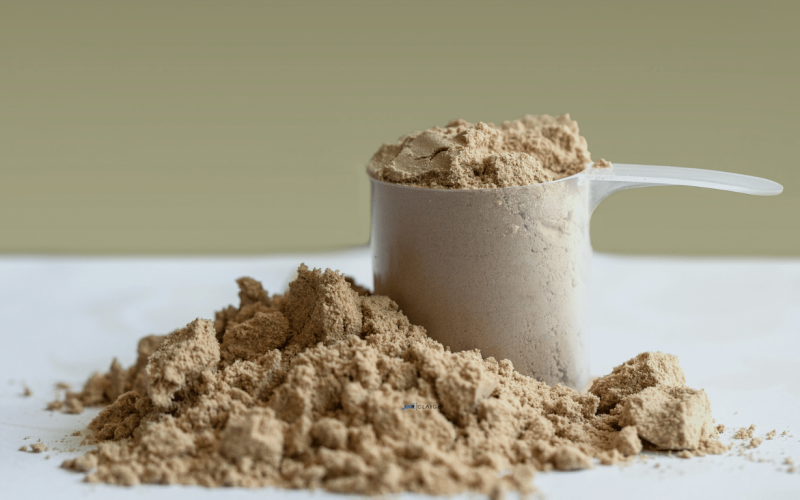Whey protein has become a household name in health and fitness circles — and for good reason. As one of the highest quality protein sources available, whey is more than just a supplement; it’s a catalyst for performance, recovery, and overall wellness. Derived from milk during the cheese-making process, whey is a complete protein, meaning it contains all nine essential amino acids. This makes it a powerful tool for anyone aiming to build muscle, lose fat, or simply maintain a balanced diet.
Unlike some proteins that are slow to digest, whey is absorbed quickly by the body, making it ideal for post-workout recovery. It delivers a rapid influx of amino acids that help repair muscle tissue, support immune function, and improve nutrient absorption. Whether you’re an athlete, a casual gym-goer, or someone managing your weight, incorporating whey protein into your daily routine can help you meet your goals efficiently — and deliciously.
Expert Insights: Understanding the Whey Forward
According to Expert Market Research, the growing appeal of whey protein is rooted in its wide range of applications and exceptional health benefits. Consumers are increasingly seeking convenient and nutritious options, and whey protein stands out for its digestibility, versatility, and proven impact on muscle health. Expert Market Research also notes that innovations in flavoring, formulation, and sustainability are reshaping how whey protein is consumed — from ready-to-drink shakes to baked goods and snacks. These insights suggest that the whey protein market is being driven not just by bodybuilders, but by everyday individuals looking to fuel their lives with smarter nutrition choices.
Beyond the Gym: Whey Protein in Everyday Life
While it’s easy to associate whey protein with fitness buffs and muscle-bound athletes, it’s actually a nutritional powerhouse for people of all lifestyles. Need a quick, protein-rich breakfast? Blend it into your smoothie. Looking to curb hunger between meals? Stir it into Greek yogurt. Whey protein is incredibly adaptable and works well in both sweet and savory dishes, from pancakes and muffins to protein-packed soups.
The real magic lies in its simplicity — just one scoop can deliver around 20-25 grams of high-quality protein. That’s a game-changer for anyone with a busy schedule or dietary restrictions. It’s also a safe and effective way for older adults to preserve muscle mass, especially when combined with light resistance training.
Understanding the Types: Isolate vs Concentrate
Not all whey protein is created equal, and understanding the types available can help you choose the right one for your needs. Whey protein concentrate contains some fats and carbohydrates but maintains a high protein content, making it ideal for those who want balanced nutrition with great taste. Whey isolate, on the other hand, undergoes more processing to remove most of the fat and lactose, offering a higher protein percentage per serving.
There’s also hydrolyzed whey, which is pre-digested for faster absorption and often used in medical nutrition or for those with sensitive digestion. Each type has its unique benefits, but all share one core attribute — delivering protein your body can actually use, fast.
The Role of Whey Protein in Weight Management
Protein is known for promoting satiety, meaning it helps you feel full longer. This makes whey protein an excellent addition to weight management strategies. Unlike sugar-heavy snacks or carb-loaded meals, whey keeps hunger in check while maintaining muscle mass, especially during calorie-restricted diets.
Its thermogenic effect — the energy required to digest and process protein — is also higher than that of fats or carbs, subtly boosting metabolism. When paired with resistance training, whey not only aids in fat loss but also ensures that lean body mass is preserved, giving you a more toned, defined physique.
Clean Ingredients and Transparent Labels Matter
As with any nutritional product, quality is key. Always opt for whey protein powders that are free from artificial sweeteners, unnecessary fillers, and excessive sugar. Transparent labels, minimal ingredients, and clear sourcing are becoming the standard as consumers grow more educated about what they’re putting into their bodies.
Many brands now offer grass-fed whey, non-GMO certifications, and even organic variants, catering to individuals who are conscious about both health and sustainability. Clean, responsibly sourced whey protein not only tastes better but also supports ethical farming and production practices.
The Future is Functional: Whey in Wellness
Whey protein is no longer limited to gym bags and protein bars. It’s finding its way into the mainstream health and wellness scene through innovative formats like protein coffees, fortified cereals, dessert cups, and even skincare products. With rising interest in functional foods — products that deliver health benefits beyond basic nutrition — whey is leading the pack.
Its role in supporting immunity, improving gut health (especially when paired with probiotics), and aiding recovery after illness makes it a versatile addition to modern diets. As people continue to prioritize holistic health, whey protein is evolving into a staple that supports strength, stamina, and wellness — all in one scoop.
A Scoop of Health in Every Serving
At its core, whey protein represents balance — between strength and recovery, health and taste, science and nature. It’s a tool that empowers people to take charge of their nutrition in a simple, effective, and delicious way. Whether your goals are athletic, aesthetic, or simply about feeling your best, whey protein offers a reliable, science-backed solution that fits seamlessly into everyday life.
So, the next time you’re reaching for that protein shake, know that it’s more than a fitness trend — it’s a smart step toward stronger, healthier living.












